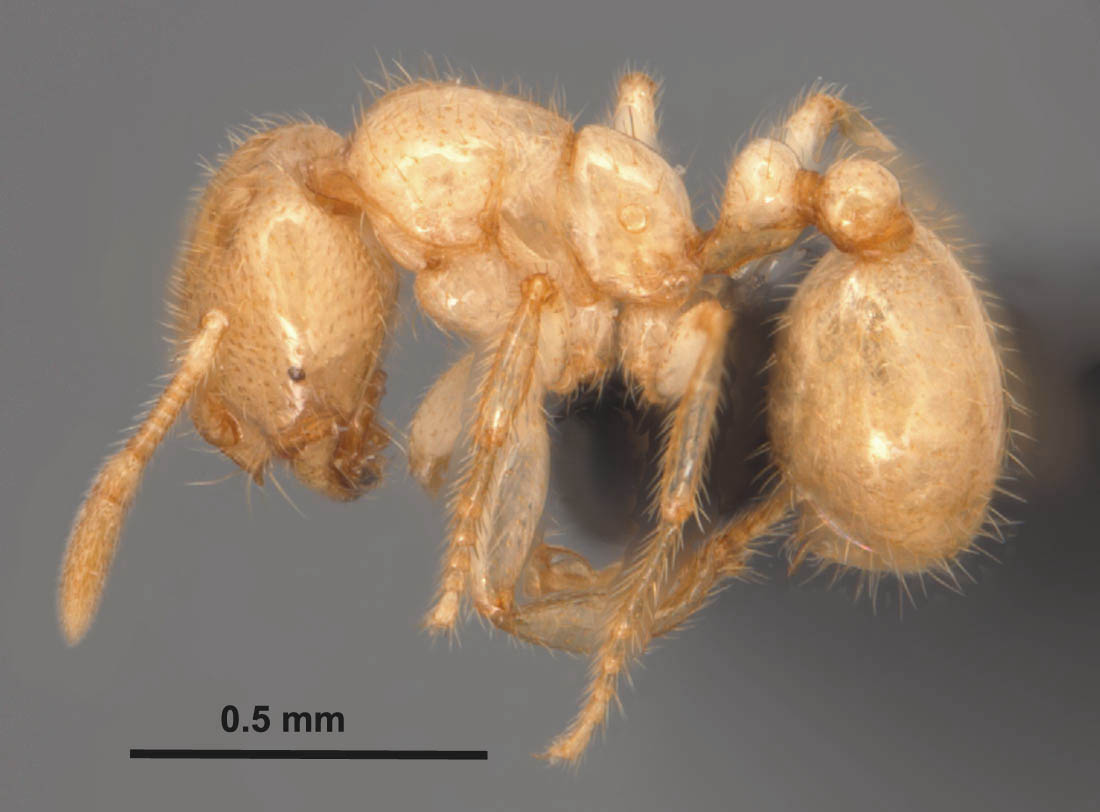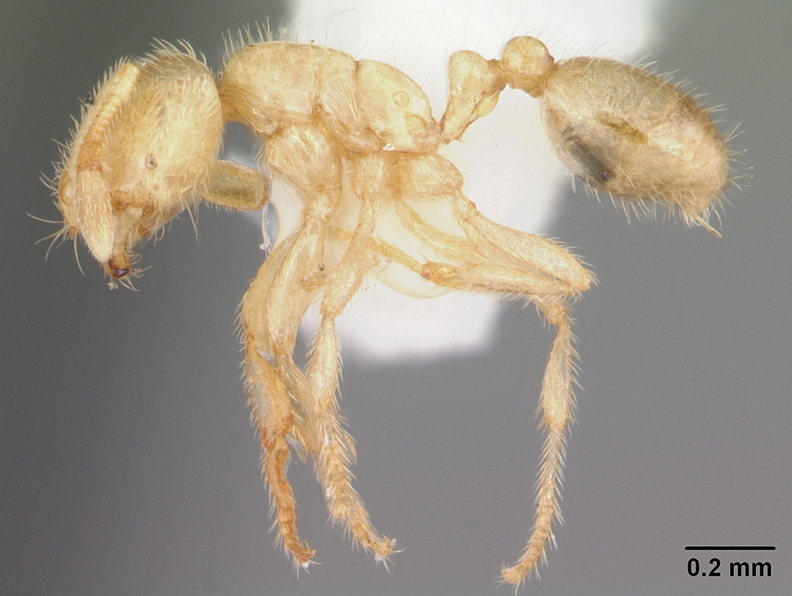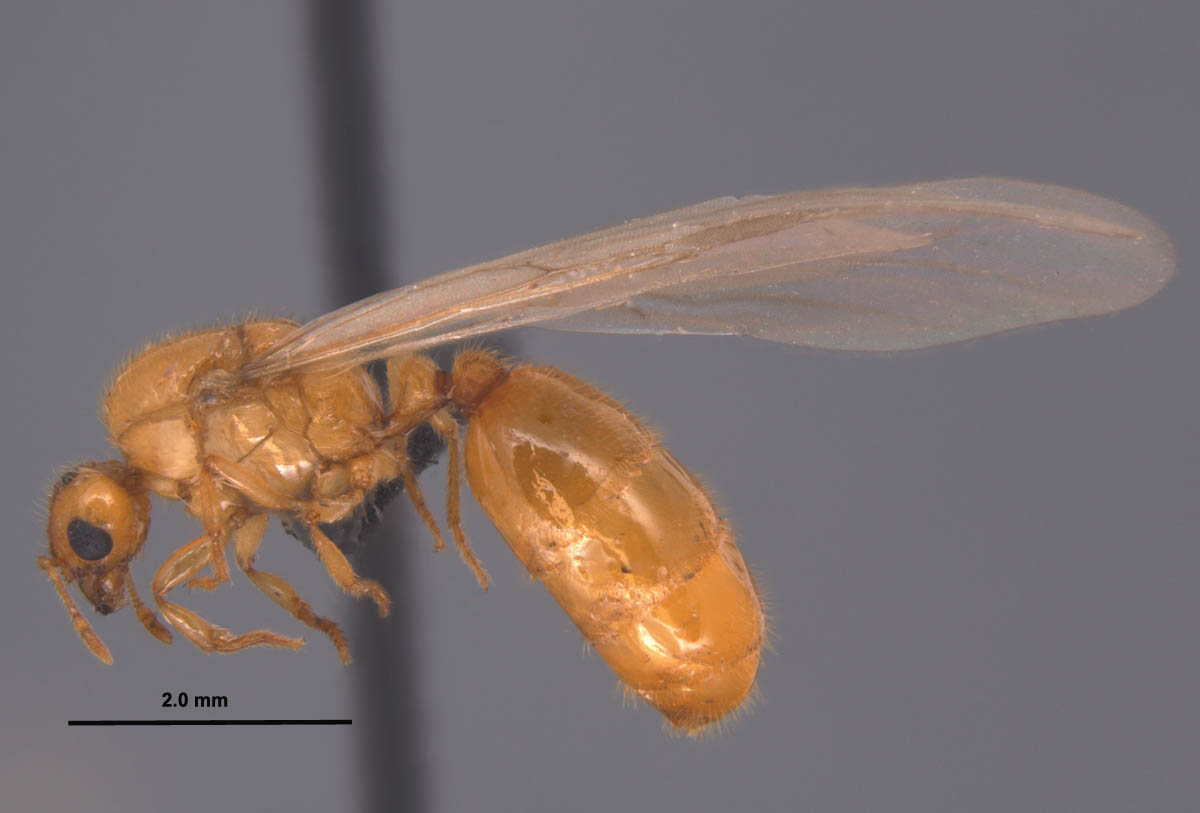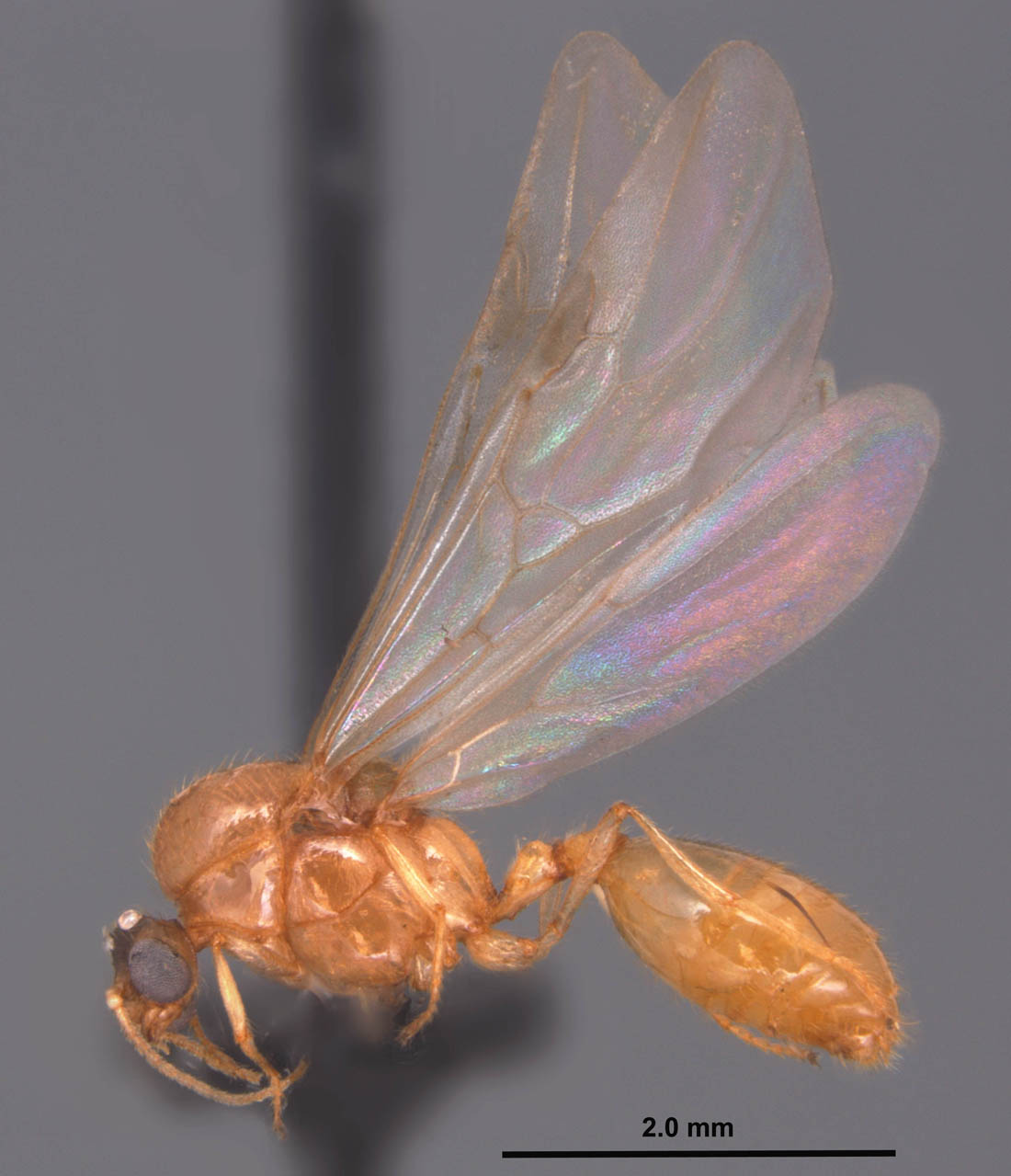Subfamily MYRMICINAE |
|
Solenopsis pergandei, side view of a worker - MS specimen (click image to enlarge). |
|
Solenopsis pergandei, full face view of a worker (click image to enlarge). Photo courtesy of http://www.antweb.org/ |
Solenopsis pergandei, side view of a worker (click image to enlarge). Photo courtesy of http://www.antweb.org/ |
Solenopsis pergandei, full face view of a queen - FL specimen (click image to enlarge). |
Solenopsis pergandei, side view of a queen - FL specimen (click image to enlarge). |
Solenopsis pergandei, side view of a queen (click image to enlarge). Photo courtesy of http://www.antweb.org/ |
Solenopsis pergandei, side view of a male - FL specimen (click image to enlarge). |
Introduction Solenopsis pergandei is a relatively large, milky white colored, and relatively large species that appears to be confined to nesting in a variety of sand habitats int the Southeast. Identification Hybridization is not uncommon among the larger fire ant group, which can make identification of some species difficult. Identification of thief ants is perhaps even more challenging due to their minute size, similar appearance of workers of one species to another, taxonomic problems, and lack of knowledge of all castes. Worker: SIze, minute, but relatively large compared to many thief ant species [1.74-1.86 mm in total length (measurements from Pacheco 2007)]. Concolorous light, milky white. Well developed lateral and extralateral teeth on the clypeus. The eyes are small with only 2 facets. Punctures on head are coarse and larger than the diameter of hairs which arise from them. Metanotal suture is deeply impressed. Postpetiole circular (in dorsal view). Female: Relatively large, robust (approximately 5.3 mm in TL), yellowish orange, and opaque. Male: Relatively large (about 4 mm in TL), yellowish orange, opaque. This species is most similar to S. molesta, but workers can be distinguished by their pale yellow color, opaque appearance, and coarse punctures on the head. Biology and Economic Importance Distribution Literature Cited Links |
|









